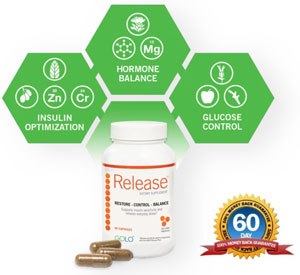Fitness
What are the benefits of pet therapy?
Published
1 year agoon
By
mbkteam
In a world where mental health challenges are increasingly prevalent, animal-assisted therapy (AAT) emerges as a beacon of hope. This therapeutic approach, which integrates animals into treatment plans, offers a unique blend of emotional, psychological, and physical benefits. From alleviating symptoms of mental health disorders to fostering social interactions, the impact of AAT is profound and far-reaching. This article delves into the transformative power of animal-assisted therapy, providing a comprehensive overview of its benefits, applications, and underlying mechanisms.
Animal-assisted therapy leverages the intrinsic bond between humans and animals, a connection that has been cherished for centuries. Historical accounts and anecdotal evidence underscore the therapeutic potential of animals. However, the burgeoning body of scientific research solidifies AAT's status as a legitimate and effective therapeutic intervention. The remarkable benefits of AAT extend across age groups and clinical conditions, making it a versatile and invaluable tool in modern healthcare.
One of the most compelling aspects of animal-assisted therapy is its ability to enhance emotional well-being. Interacting with animals has been shown to reduce stress, anxiety, and depression. The presence of a therapy animal can elicit a sense of calm and security, providing comfort during difficult times. This is particularly significant for individuals with post-traumatic stress disorder (PTSD), where traditional therapies may fall short. AAT offers a non-invasive and gentle alternative, helping patients navigate their trauma in a supportive environment.
Moreover, the impact of AAT on physical health is equally noteworthy. Engaging with therapy animals encourages physical activity, which is crucial for overall health. For elderly patients or those with mobility issues, AAT provides gentle exercise to improve cardiovascular health, joint mobility, and muscle strength. Walking a dog or playing with a cat can lead to significant health improvements, highlighting the holistic benefits of this therapeutic approach.
The role of animal-assisted therapy in socialization cannot be overstated. Therapy animals serve as social catalysts, easing individual interactions and breaking down communication barriers. This is particularly beneficial for children with autism spectrum disorders (ASD) or those with social anxiety. Animals' non-judgmental and unconditional nature fosters a safe space for individuals to express themselves, enhancing their social skills and boosting self-confidence.
The benefits of AAT are particularly profound in pediatric settings. Children undergoing medical treatments often experience high levels of stress and discomfort. The presence of a therapy animal can transform a sterile hospital environment into a warm and welcoming space. Studies have shown that children are likelier to open up and communicate during therapy sessions when a therapy animal is present. This leads to better therapeutic outcomes and a more positive overall experience.
The versatility of animal-assisted therapy is further demonstrated in its applications across various clinical settings. In psychiatric hospitals, AAT is used to reduce aggression and improve mood among patients with severe mental illnesses. In nursing homes, therapy animals provide companionship and emotional support to elderly residents, alleviating feelings of loneliness and isolation. The integration of AAT into rehabilitation programs for individuals recovering from substance abuse or trauma has also shown promising results, supporting their journey toward recovery.
An intriguing aspect of animal-assisted therapy is its ability to enhance cognitive function. Research indicates that animal interaction stimulates cognitive processes, improving memory, attention, and problem-solving skills. This has significant implications for individuals with cognitive impairments, such as dementia or Alzheimer's disease. Engagement with therapy animals provides mental stimulation, slows cognitive decline, and improves the quality of life for these individuals.
Despite the myriad benefits, it is essential to acknowledge the potential risks associated with animal-assisted therapy. Allergies, fears, and hygiene concerns are valid considerations that must be addressed to ensure patients' and animals' safety and well-being. Comprehensive screening and training protocols are crucial to mitigate these risks. Therapy animals undergo rigorous training to ensure they are well-behaved and responsive to their handlers, creating a safe and controlled environment for therapeutic interactions.
Numerous studies and clinical trials underscore the effectiveness of animal-assisted therapy. A meta-analysis of 49 studies revealed significant improvements in behavioral problems, emotional well-being, and autism spectrum symptoms among individuals participating in AAT programs, National Center for Biotechnology Information. These findings highlight the efficacy of AAT as a therapeutic intervention and underscore the need for further research to optimize its application.
The implementation of animal-assisted therapy is supported by various organizations dedicated to promoting the human-animal bond. One such organization, Pet Partners, differentiates between animal-assisted therapy and animal-assisted activities. While the former involves structured therapeutic interventions with specific goals, the latter involves informal interactions promoting general well-being. Both approaches have unique benefits and contribute to the overall impact of animal-assisted interventions National Center for Biotechnology Information.
A hallmark of animal-assisted therapy is its adaptability. Therapy animals can be integrated into various therapeutic settings, from hospitals and nursing homes to schools and private practices. This flexibility allows healthcare providers to tailor AAT programs to meet the unique needs of their patients. For example, a child with a literacy challenge may benefit from reading sessions with a therapy dog. At the same time, an elderly patient with chronic pain may find relief through gentle interactions with a therapy cat.
The success of animal-assisted therapy is not solely attributed to the animals but also to the dedicated handlers facilitating these interactions. Handlers play a critical role in ensuring the safety and effectiveness of AAT sessions. They are trained to recognize their therapy animals' subtle cues and manage interactions in a way that maximizes therapeutic benefits. The bond between the handler and the therapy animal is a cornerstone of the effectiveness of animal-assisted therapy.
Incorporating animal-assisted therapy into treatment plans requires a collaborative approach. Healthcare providers, therapists, and handlers must work together to design and implement AAT programs tailored to patients' individual needs. This collaborative effort ensures that AAT is integrated seamlessly into existing treatment plans, enhancing the therapeutic experience. Regular assessments and adjustments are essential to ensure that the goals of the therapy are being met and that the well-being of both patients and animals is maintained.
The future of animal-assisted therapy is promising, with ongoing research and advancements poised to expand its applications. Emerging technologies, such as virtual reality and telehealth, offer new avenues for delivering AAT to individuals who may not have access to therapy animals in person. These innovations can potentially broaden the reach of animal-assisted therapy, making it more accessible to diverse populations.
Public awareness and acceptance of animal-assisted therapy continue to grow, driven by the positive experiences of individuals who have benefited from this unique form of therapy. Media coverage, community events, and educational programs play a crucial role in promoting the benefits of AAT and encouraging its integration into mainstream healthcare. As more people recognize the therapeutic potential of animals, the demand for animal-assisted therapy is likely to increase, paving the way for further research and development in this field.
In conclusion, animal-assisted therapy represents a powerful and transformative approach to enhancing mental, emotional, and physical well-being. Its versatility and the profound bond between humans and animals make it an invaluable tool in modern therapeutic practices. As research continues to validate its effectiveness and uncover new applications, animal-assisted therapy is poised to become an integral component of holistic healthcare. The journey of discovery and integration is ongoing, promising a future where the healing power of animals is harnessed to its fullest potential.
For more information on the benefits and applications of animal-assisted therapy, you can visit Psychology Today and Therapy Dogs. These resources provide valuable insights into the transformative impact of therapy animals and their role in promoting health and well-being. By exploring these resources, you can gain a deeper understanding of how animal-assisted therapy is making a difference in the lives of individuals across the globe.













